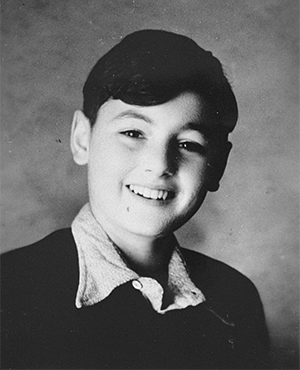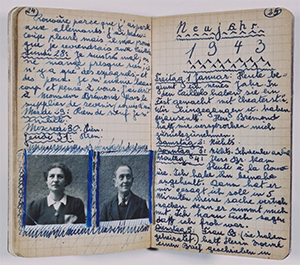A Holocaust Survivor Speaks on the ASU Campus: Peter Feigl, one of the Children Hidden at Le Chambon, on Escaping the Nazis, Documenting his Struggles with Diary Keeping and Photographs


Appalachian State University’s Center for Judaic, Holocaust, and Peace Studies invites the public to a presentation by Peter Feigl, a child survivor of the Holocaust who went into hiding in Southern France and was one of the more than 3,500 Jewish children rescued in and around Le Chambon sur Lignon. Feigl documented his struggles in a diary and with photographs. His talk will take place at Grandview Ballroom, North End Zone Building at Kidd Brewer Stadium, 135 Jack Branch Drive, ASU campus, on Tuesday, July 26. The talk will begin at 7:00 pm. The event is part of the twentieth anniversary Martin and Doris Rosen Summer Symposium on Film and Photography During and After the Holocaust.
Peter Feigl was born on March 1, 1929, in Berlin, Germany. He was the only child of Ernst and Agnes Bornstein Feigl, non-practicing Jews, who moved to Vienna in 1937. His father, a mechanical engineer, worked for a multinational company that sold automotive equipment throughout Europe, while his mother stayed home to raise Peter in an upper middle class environment. Once relocated to the Austrian capital, Peter was baptized in the Catholic Church in the hope he would be shielded from antisemitism. When Nazi Germany annexed Austria in March 1938, the family fled West. Along with his mother and grandmother, Peter was detained as an enemy alien by French authorities after the start of the German invasion in May 1940. They were released after the French defeat. With the help of local nuns, they settled in Auch, west of Toulouse, in Vichy France. In the summer of 1942, the Vichy government under the leadership of Marechal Petain rounded up Jews, whom the Germans deported East. In late August, Peter’s parents were arrested. The Germans deported them to Auschwitz, where they were murdered within a month. Peter, who had been away from his parents in a Quaker summer camp, was sent to the predominantly Protestant village Le Chambon sur Lignon. He was one of some 3,500 Jews hidden and sheltered in the village and surrounding areas. With false papers, Peter became a boarding student at a high school in Figeac, France. He collected countless photographs, capturing his experiences and struggles.
 In May 1944, the Germans raided Figeac. Peter escaped, reaching and crossing the Swiss border with the help of the Jewish underground. He immigrated to the United States in July 1946, where he pursued a private-sector career in international sales of aircraft. He also served five years as a Senior Negotiator in the Office of the Secretary of Defense. After his retirement, he became a volunteer at the United States Holocaust Memorial Museum.
In May 1944, the Germans raided Figeac. Peter escaped, reaching and crossing the Swiss border with the help of the Jewish underground. He immigrated to the United States in July 1946, where he pursued a private-sector career in international sales of aircraft. He also served five years as a Senior Negotiator in the Office of the Secretary of Defense. After his retirement, he became a volunteer at the United States Holocaust Memorial Museum.
For more information, please contact the Center for Judiac, Holocaust and Peace Studies at 828.262.2311 or holocaust@appstate.edu. This is a hybrid program. To register for the online Zoom version, click here: https://appstate.zoom.us/meeting/register/tJElcuirqzsuHNyiBD4novBMys2m15XBj7ob.